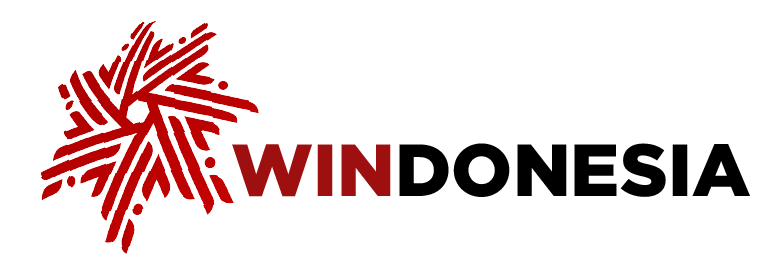Sector
Energy
Indonesia possesses vast, distributed, and diverse energy resources. The country’s energy subsectors include gas, clean water, and electricity, with demand projected to increase to 464 terawatt-hours (TWh) by 2024 and further increase to 1,885 TWh by 2060. The use of renewable energy is a top priority and the government has set ambitious goals in the General Planning for National Energy (RUEN) and General Planning for National Electricity (RKUN) to integrate 23 percent renewable energy into the national energy mix by 2025. At least US$41.8 billion of investments are needed to fully realize the goal.
View moreEnergy
Indonesia possesses vast, distributed, and diverse energy resources. The country’s energy subsectors include gas, clean water, and electricity, with demand projected to increase to 464 terawatt-hours (TWh) by 2024 and further increase to 1,885 TWh by 2060. The use of renewable energy is a top priority and the government has set ambitious goals in the General Planning for National Energy (RUEN) and General Planning for National Electricity (RKUN) to integrate 23 percent renewable energy into the national energy mix by 2025. At least US$41.8 billion of investments are needed to fully realize the goal.
Despite having a renewable energy potential estimated at around 3,000 gigawatts (GW), current utilization is merely about 12.74 GW or 3 percent. This renewable energy potential includes solar energy, which is widely spread across Indonesia, especially in East Nusa Tenggara, West Kalimantan, and Riau, with a potential of approximately 3,294 GW and utilization of 323 megawatts (MW). Another renewable energy, hydro energy, with a potential of 95 GW, is primarily found in North Kalimantan, Aceh, West Sumatra, North Sumatra, and Papua, with utilization reaching 6,738 MW.
Additionally, bioenergy, encompassing biofuel, biomass, and biogas, is distributed throughout Indonesia with a total potential of 57 GW and utilization of 3,118 MW. Wind energy (>6 m/s) found in East Nusa Tenggara, South Kalimantan, West Java, South Sulawesi, Aceh, and Papua has a substantial potential of 155 GW, with utilization of 154 MW.
Furthermore, geothermal energy, strategically located in the “Ring of Fire” region covering Sumatra, Java, Bali, Nusa Tenggara, Sulawesi, and Yogyakarta has a potential of 23 GW and utilization of 2,373 MW. Meanwhile, marine energy, with a potential of 63 GW, especially in Yogyakarta, East Nusa Tenggara, West Nusa Tenggara, and Bali, remains untapped.
Among the renewable energy sources and their potential, these projects entail significant investments. According to the Electricity Supply Business Plan (RUPTL) of the State Electricity Company (PLN), from 2021 to 2030, geothermal power plants require an investment of US$17.35 billion, large-scale solar power plants necessitate US$3.2 billion, hydropower plants require US$25.63 billion, and base renewable energy power plants require US$5.49 billion. Additionally, bioenergy power plants require an investment of US$2.2 billion, wind power plants US$1.03 billion, peaker power plants US$0.28 billion, and rooftop solar power plants IS$3 billion.
As of 2022, hydro and geothermal are the primary drivers of growth. Private entities had enhanced the capacity of hydro power by adding 603.66 MW in mini, micro, and standard hydro facilities, reaching a total of 2,459.72 MW. Meanwhile, the geothermal sector experienced a 412 MW increase over the last five years from the private sector, bringing the total capacity to 1,782.8 MW by 2022. Aside from these two renewable energy, sources solar energy has also presented significant opportunities, particularly given Indonesia's potential for floating solar systems on reservoirs and dams.
Furthermore, the country’s other national energy subsector of gas underscores Indonesia’s wealth in natural gas. Indonesia’s natural gas reserves are predominantly methane (80-95 percent), which can be used directly or processed into Liquefied Natural Gas (LNG). However, demand has greatly increased over the past decade for Liquefied Petroleum Gas (LPG). From 2018 to 2022, domestic LPG production reached between 1.9 to 2 million tons, which is insufficient to meet national needs, leading to increasing imports that reached 6.74 million tons in 2022.
Currently, the Energy and Mineral Resources Ministry is working to attract new investments for LPG refineries through a cluster-based business scheme for the construction or future development of new LPF refineries. The ministry has identified the potential of rich gas to produce an additional 1.2 million tons of LPG cylinders domestically.
Latest News
West Papua Governor Dominggus Mandacan met with Chinese Ambassador to Indonesia Wang Lutong at the Chinese Embassy in Jakarta on Nov. 11, 2025. The meeting discussed cooperation in various fields and potential Chinese investment in West Papua. Mandacan was accompanied at the meeting by, among others, West Papua Regional Secretariat Development Administration Bureau Head Onasius P. Matani, West Papua Environmental Office Head Reymond R.H. Yap, and West Papua Liaison Agency Head Erix I.W. Ayatanoy.
The potential cooperation encompasses new and renewable energy, the transition to electric vehicles (EVs), trade expansion, education, culture, tourism, and healthcare. The collaboration on EVs would include EV charging infrastructure, electric buses, and small EVs suitable for Papua. This should be accompanied by training, capacity building, and technology transfer with Chinese EV manufacturers.
The cooperation in trade expansion include strengthening direct export channels to China for fishery products such as tuna, crab, lobster, shrimp, and seaweed; agricultural products such as coconut, coffee, nutmeg, and areca nut; as well as wood and non-timber forest products such as rattan.
In the fields of education, culture, and tourism, cooperation could include providing scholarships and academic partnerships for Papuan students in China, teacher exchanges and training, exploring and establishing the first Confucian Institute in Papua as a center for language and cultural exchange, as well as ecotourism in the Arfak Mountains and the development of Mansinam Island.
In the health care sector, collaboration could be established to improve health human resources through general practitioner and specialist programs, procurement of medical equipment, development of West Papua Provincial Hospitals, as well as provision of floating hospitals in the seven regencies of West Papua.

